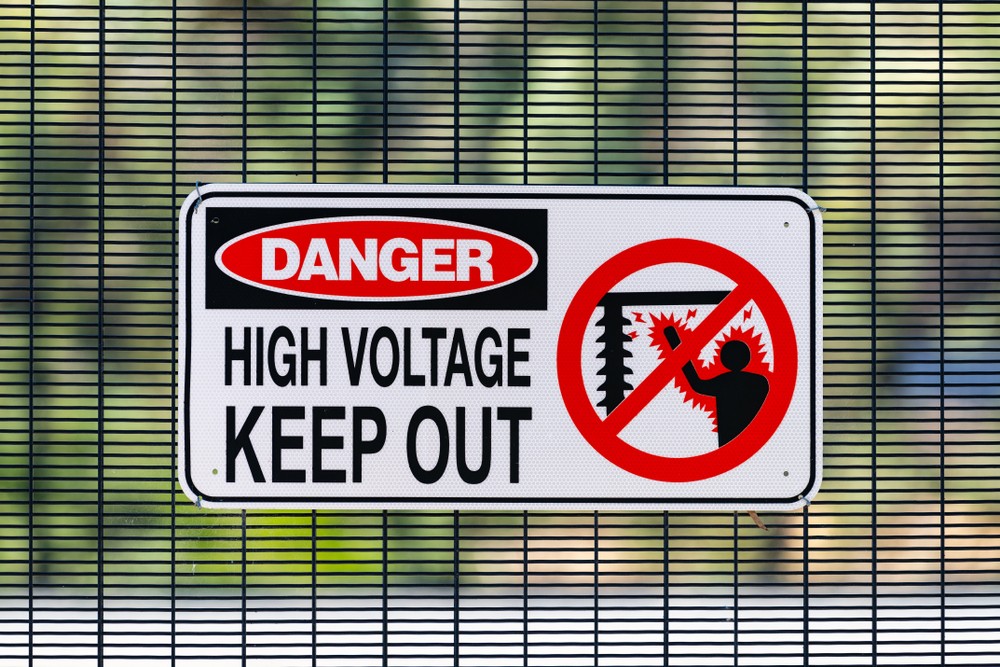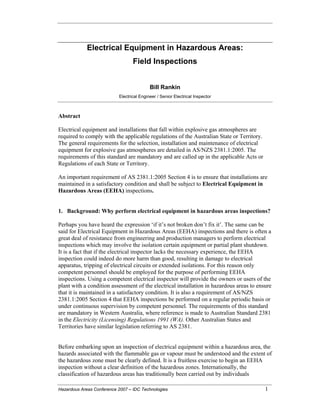Roar Solutions Can Be Fun For Everyone
Roar Solutions Can Be Fun For Everyone
Blog Article
Roar Solutions Things To Know Before You Buy
Table of ContentsRoar Solutions for DummiesThe Roar Solutions StatementsThe smart Trick of Roar Solutions That Nobody is Talking About
In such an ambience a fire or surge is possible when three basic conditions are satisfied. This is usually described as the "dangerous location" or "combustion" triangle. In order to safeguard setups from a prospective explosion a technique of analysing and identifying a possibly dangerous area is required. The function of this is to ensure the correct choice and setup of equipment to eventually prevent an explosion and to guarantee safety of life.
(https://www.behance.net/thomascarrillo3)
No devices needs to be mounted where the surface temperature level of the devices is higher than the ignition temperature of the given threat. Below are some common dirt dangerous and their minimum ignition temperature. Coal Dust 380C 225C Polythene 420C (thaws) Methyl Cellulose 420C 320C Starch 460C 435C Flour 490C 340C Sugar 490C 460C Grain Dust 510C 300C Phenolic Resin 530C > 450C Aluminium 590C > 450C PVC 700C > 450C Residue 810C 570C The possibility of the risk existing in a focus high enough to create an ignition will certainly differ from place to area.
In order to classify this risk an installation is split into areas of danger depending upon the quantity of time the hazardous exists. These locations are referred to as Zones. For gases and vapours and dirts and fibres there are three zones. Zone 0 Area 20 A hazardous atmosphere is extremely likely to be present and might be existing for extended periods of time (> 1000 hours annually) or perhaps continually Area 1 Area 21 A dangerous atmosphere is possible yet not likely to be present for long durations of time (> 10 450 C [842 F] A classification of T6 means the minimum ignition temperature level is > 85 C [185 F] Hazardous location electric equipment perhaps developed for usage in greater ambient temperature levels. This would indicated on the score plate e.g. EExe II C T3 Ta + 60C( This indicates at 60C ambient T3 will not be surpassed) T1 T1, T2, T3, T4, T5, T6 T2 T2, T3, T4, T5, T6 T3 T3, T4, T5, T6 T4 T4, T5, T6 T5 T5, T6 T6 T6 A T Course ranking of T1 means the optimum surface temperature level created by the instrument at 40 C is 450 C. Presuming the connected T Class and Temperature level score for the equipment are proper for the location, you can constantly make use of a tool with an extra rigorous Division ranking than needed for the area. There isn't a clear response to this inquiry. It actually does depend on the kind of tools and what repair services require to be executed. Tools with specific examination procedures that can't be executed in the area in order to achieve/maintain third party score. Should come back to the manufacturing facility if it is prior to the equipment's solution. Area Repair Service By Authorised Worker: Complex testing might not be required nevertheless particular procedures might require to be followed in order for the tools to keep its 3rd party rating. Authorized personnel must be employed to do the job properly Fixing need to be a like for like replacement. New component need to be thought about as a direct replacement needing no unique screening of the equipment after the repair service is full. Each tool with a harmful ranking should be evaluated independently. These are described at a high degree listed below, but also for more in-depth info, please refer directly to the guidelines.
The Best Guide To Roar Solutions
The tools register is a detailed data source of devices documents that consists of a minimum set of fields to determine each thing's place, technological criteria, Ex-spouse classification, age, and ecological data. The ratio of Thorough to Shut assessments will be determined by the Tools Threat, which is examined based on ignition danger (the chance of a resource of ignition versus the likelihood of a combustible ambience )and the unsafe location category
( Zone 0, 1, or 2). Executing a durable Risk-Based Assessment( RBI )technique is vital for guaranteeing compliance and security in managing Electric Equipment in Hazardous Areas( EEHA).
The Roar Solutions PDFs

In regards to explosive danger, a hazardous location is an environment in which an eruptive environment exists (or may be anticipated to be existing) in quantities that require special preventative measures for the building and construction, installation and usage of equipment. hazardous area electrical course. In this write-up we Roar Solutions discover the difficulties dealt with in the work environment, the danger control steps, and the called for competencies to function securely
It issues of modern-day life that we produce, store or deal with a variety of gases or fluids that are deemed flammable, and a variety of dusts that are deemed combustible. These substances can, in certain problems, form explosive environments and these can have major and awful effects. A lot of us are familiar with the fire triangular get rid of any type of one of the three components and the fire can not take place, but what does this mean in the context of hazardous locations? When damaging this down into its easiest terms it is essentially: a mix of a certain amount of launch or leak of a specific compound or material, combining with ambient oxygen, and the presence of a resource of ignition.
In most circumstances, we can do little concerning the degrees of oxygen in the air, but we can have considerable impact on resources of ignition, as an example electric equipment. Dangerous locations are recorded on the hazardous area category illustration and are determined on-site by the triangular "EX LOVER" indication. Here, amongst various other key details, zones are split into 3 types depending on the danger, the likelihood and period that an eruptive atmosphere will exist; Zone 0 or 20 is deemed the most dangerous and Area 2 or 22 is regarded the least.
Report this page